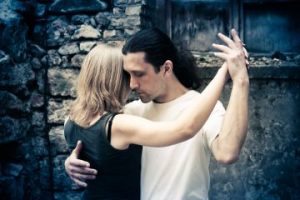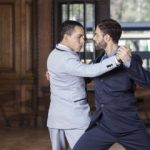The rebirth of tango, or more popularly referred to as The Tango Renaissance, started in 1983 right after the fall of the military junta in Argentina. Suddenly, Buenos Aires basked in a joyful atmosphere and everyone was in the mood to dance as though an actual veil had been lifted off them. All dance and martial arts classes were filling up all over the city. People wanted to learn Tango all of a sudden when they realised that it’s all right to take pride in being Argentine again. And what better way to demonstrate this pride than to take part in Tango, Argentina’s symbol to the world.
 However, there had been some setbacks at the start. One of which is that there was no tradition of teaching Tango and that there had been no Tango classes for beginners during its Golden Age. There were virtually no teachers and no standard practices being followed. There was an incessant hunger for mentors that needed to be fed.
However, there had been some setbacks at the start. One of which is that there was no tradition of teaching Tango and that there had been no Tango classes for beginners during its Golden Age. There were virtually no teachers and no standard practices being followed. There was an incessant hunger for mentors that needed to be fed.
To address this unrelenting need, dancers started giving tango classes for those wanting to learn the dance. This is the same scenario everywhere in the world since Tango re-emerged in 1983. People taught not because they thought they were gurus and knew everything but because people asked them to. Aspiring dancers learned tango through going to classes and travelling to Europe. Very few were experienced dancers.
At the beginning of the Tango Renaissance, the first teachers in Buenos Aires were young dancers who didn’t know much about tango. Those who were dancing during the Golden Age did not dance anymore and those who did had been suspicious of strangers. So the first people who danced were newbies. Those who haven’t danced tango or haven’t danced with someone in the Golden Age. One problem was that “teachers” weren’t really teaching tango. Most of what they taught were only things that they had made up on their own.
Eventually, people who had danced in the Golden Age started dancing again after 3 decades of not dancing Tango. Thankfully, they re-discovered their passion for Tango and developed a desire to teach Tango to the new generation of dancers. Miguel and Nelly Balmaceda have played a vital role in re-establishing Tango during the renaissance era. For as much as they could, they tried to stick to the traditional way of teaching tango when organising their beginners’ classes. They only allowed students to dance with teachers until they thought they were ready. Even then, they still had to dance the most basic steps only. Many of today’s most prominent tango dancers were trained by Miguel and Nelly or trained by someone trained by them.
Complex dance steps ruled in the Tango Renaissance. There was an astounding excitement to doing these complicated steps especially when combined with the techniques of traditional Tango. It enhanced the emotional connection that defines the true essence of the dance.
Antonio Todaro was one of the most famous teachers of the renaissance period of tango. He was one of the few who danced Tango before the military regime started. He created challenging steps, incorporating it with the technique of the Golden Age. He frequently toured Europe and taught many of the professional tango dancers we know now. Shortly after his death in 1993, young dancers in Buenos Aires began to steer away from the steps he popularised. A few other dancing styles emerged in the following years.
The dancing of the people who were around during the Golden Age remained the same as they could still go to milongas in the outskirts of Buenos Aires and dance the complicated steps in its most authentic manner. However, by 1995, styles such as “Club Tango” or “Milonguero”, “Short Steps” and “Close Hold” dominated the dancing style of the people who were part of the Tango Renaissance in Buenos Aires.
Source: http://www.history-of-tango.com/tango-renaissance.html




